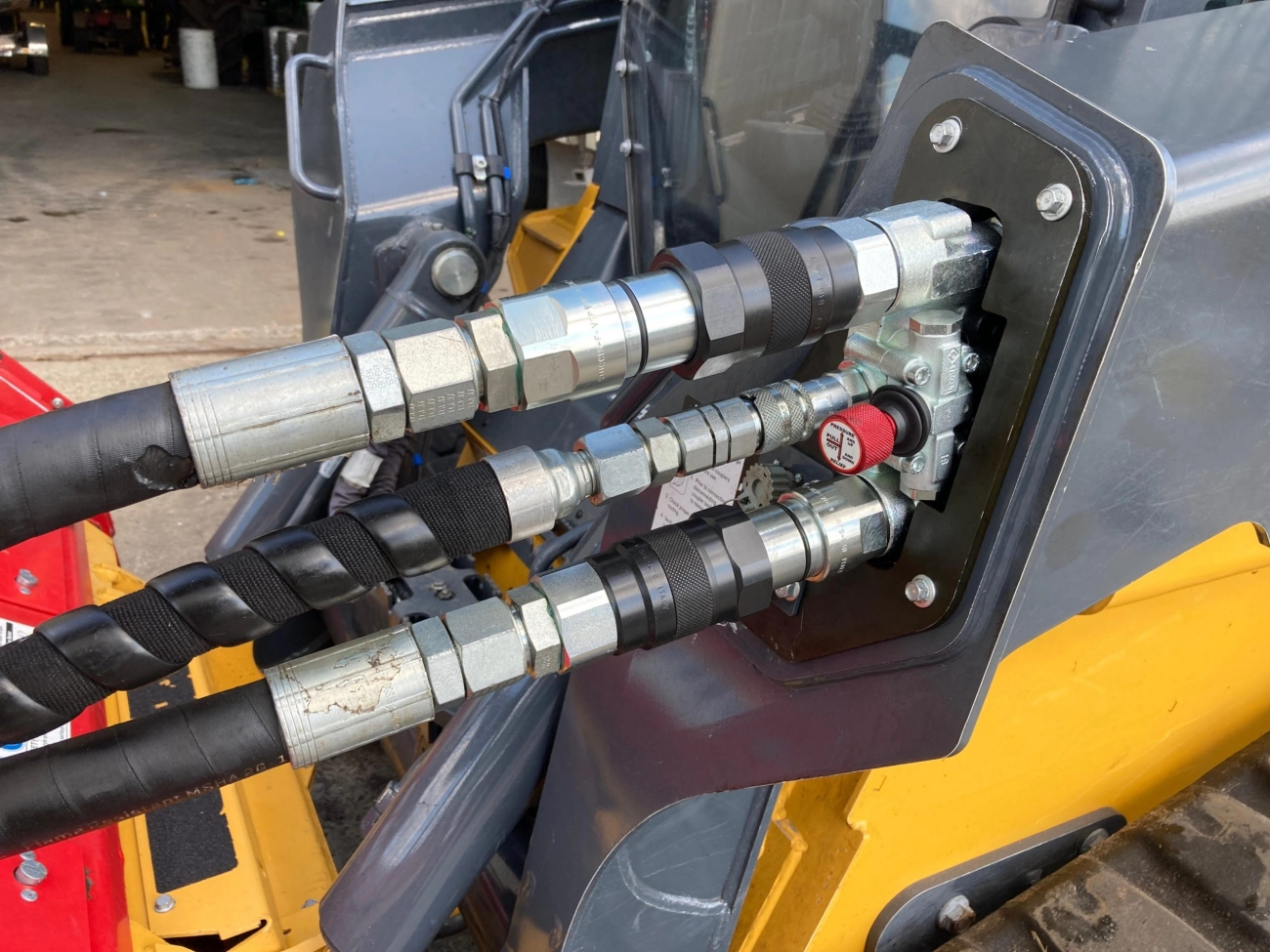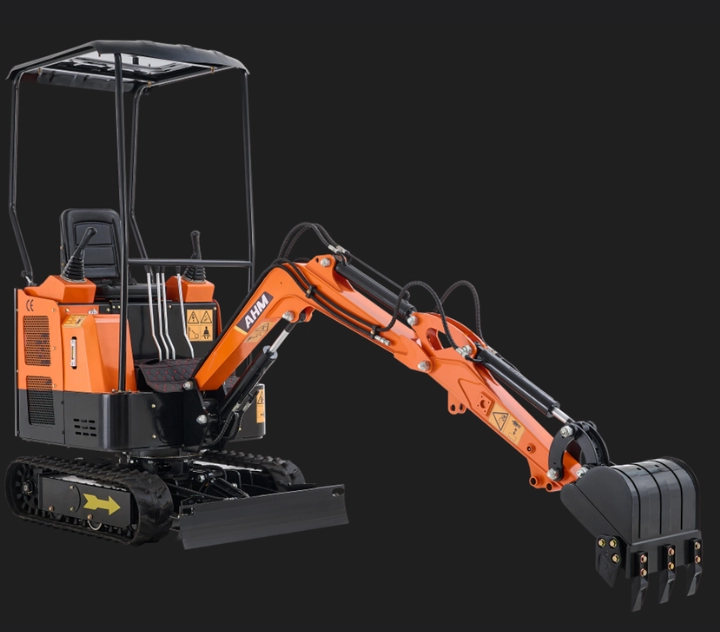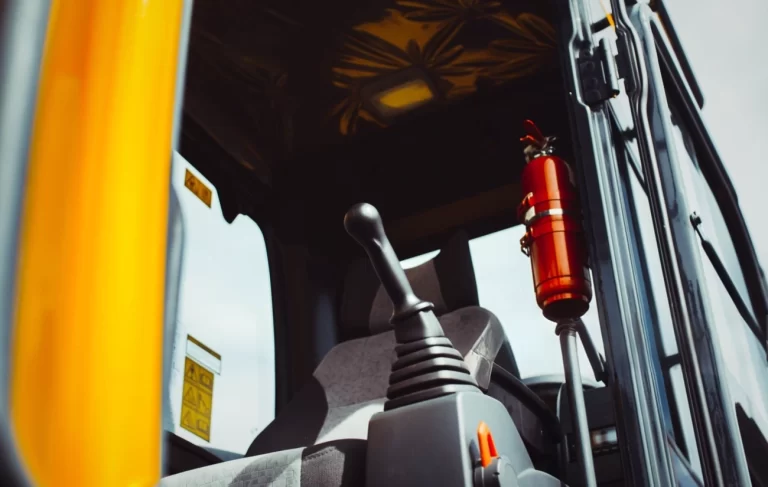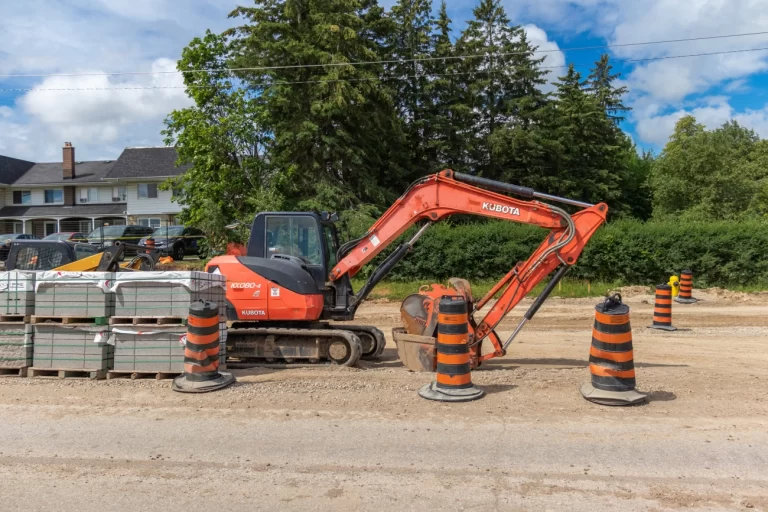-
Shandong Province, China
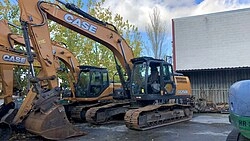
Comparison of Excavators and Crawler Excavators: Advantages, Disadvantages, and Application Analysis
What is a tracked excavator Trackhoe basic understanding
Trackhoe definition and etymology
Tracked excavator (Trackhoe), also known as tracked backhoe, is an engineering machine that combinesan excavator arm (backhoe) with a tracked chassisThe name 'Trackhoe' comes from the English words 'track' (caterpillar) and 'hoe' (shovel), indicating that this mechanical device features a shovel bucket mounted on a tracked chassis. This design originated in the mid-20th century to address mobility and strength issues in construction on complex terrains.
Trackhoe structure and mechanical design
In standard tracked excavator design,the backhoe mechanical arm is mounted on the tracked chassis, combining digging flexibility with ground stability. Its main structure includes:
- Backhoe Arm: Similar arm design with multiple joints, capable of digging, hooking, and loading operations
- Crawler system: Enhances off-road capability, able to traverse muddy, sandy, and uneven terrains
- Cab: Easy to operate, with good visibility and protective design
- Hydraulic system: Providing stable power, ensuring smooth and precise digging movements
Trackhoe common applications and on-site
Crawler excavators are widely used in various engineering scenarios, especially suitable for:
- Construction site: Earthwork, trench excavation, foundation preparation
- Agriculture and gardening: Soil tillage, large planting pits
- municipal engineering: Road maintenance, water pipe installation, urban pipeline construction
- Uneven terrain:mountainous areas, wetlands, and other environments where forklifts or wheeled equipment are difficult to operate
Trackhoe advantages and market value
Compared to wheeled backhoe loaders or standard excavators, crawler excavators have several obvious advantages:
- Excellent off-road capability:Crawler systems effectively distribute ground pressure, reducing the risk of getting stuck
- High stability:Suitable for steep slopes or soft ground environments, enhancing on-site safety
- Highly versatile: Not only capable of excavation, but also serving as lifting and loading tools
- Relatively low maintenance costs: The tracked structure is sturdy and durable, suitable for long-term heavy-duty work
These features make tracked excavators one of the preferred construction equipment choices in areas with complex terrains and challenging working conditions. Choosing the righttracked excavatorcan effectively improve project efficiency and construction safety.
For more information about mini excavators and their diverse applications, please refer to our product series introduction:Mini excavator 12。
What is an excavator? Features and advantages analysis
Definition and structure introduction of modern hydraulic excavators
Excavator A large heavy machinery commonly used in construction and civil engineering, mainly operated through hydraulic systems. Modern excavators are equipped with powerful hydraulic motors capable of controlling360-degree rotating upper structurepaired with extendable and retractable operating arms and various types of buckets, offering high flexibility. Stable power transmission, suitable for long-term continuous operation, and capable of completing a variety of complex excavation tasks.
Key design features
- 360-degree rotation structure: The upper part of the excavator can rotate completely, making it convenient to operate in narrow or complex construction sites without moving the chassis to excavate in multiple directions.
- Flexible boom and bucket combination: Multi-section arms and various buckets (such as trenching, clamshell) for easy adaptation to different work needs.
- Diverse chassis types: Common tracked chassis to ensure good grip and stable movement, also available in wheeled versions for quick surface mobility.
- Equipped with advanced hydraulic systems and comfortable cabin features, enhancing operational efficiency and safety.
Typical applications and industry scope
Excavators are widely used in:
- Civil construction (earth excavation, foundation digging)
- Large-scale material handling at mines and quarries
- Municipal engineering (road construction, pipeline installation)
- Forestry and waste management
- Building demolition and heavy lifting operations
Excavator advantages and benefits
- High flexibility and multifunctionality: 360-degree rotation and various types of digging bucket attachments, suitable for multiple operation needs.
- High work efficiency:The hydraulic system responds quickly and can quickly complete deep excavation and heavy-duty handling.
- Adapt to complex working conditions:The tracked chassis ensures the machine moves smoothly on muddy, rocky, and other terrains.
- Easy maintenance and strong durability:Core hydraulic components and structural design are optimized for long lifespan and easy maintenance.
For the mountainous terrain and complex urban construction environments in Taiwan, excavators can effectively respond to diverse terrains and work demands, making them the preferred power equipment for many large projects. If you want to learn more about our small excavator products, please refer to ourSmall Excavator Details PageThese models are specially designed for confined construction sites and versatile applications, fully meeting local market demands.
Main differences between Trackhoe and excavators: construction equipment comparison
In the construction and civil engineering market,Trackhoe (crawler backhoe) and excavatorsare common heavy machinery options, but they have obvious differences in design, function, and performance. Understanding these differences is very important for selecting the right equipment.
Fundamental differences in structure and function
- Trackhoe is a traditional backhoe arm mounted on a crawler chassis, combining a backhoe at the rear and a bucket at the front, with both digging and loading functions, suitable for multi-task use.
- Excavator Mainly designed with a rotating chassis and 360-degree all-around flexible movement, the weight distribution is even, and the digging range is wider, focusing on deep and large-scale excavation.
Such structural differences directly affect the flexibility and versatility of the equipment.
Mobility and versatility
- The advantage of Trackhoe lies in its versatility, not only capable of trench digging but also able to use a backhoe for cleaning and trimming operations. However, due to the arm and chassis design, the turning angle is limited, making movement less flexible.
- Excavators are known for their rotational flexibility, capable of rotating freely 360 degrees, suitable for complex hole digging and precise operations, performing better in narrow or complex terrains.
Comparison of power and hydraulic performance
- Excavators are usually equipped withHigh-performance hydraulic system, powerful in performance, with greater digging depth andbucket capacity than general Trackhoes, making them more capable of heavy-duty construction tasks.
- Trackhoes focus more on multi-functionality and stability, with a strong hydraulic system, but their overall digging force and depth are slightly inferior to professional excavators.
Operational efficiency and precision
- Due to the rotating chassis design, excavators can quickly adjust the digging direction,significantly improving work efficiency, and the excavation accuracy is high, suitable for demanding construction environments.
- Although the trackhoe is versatile, due to limited operating space, it requires frequent movement of the equipment's direction, resulting in lower work efficiency and excavation precision.
Differences in maintenance and durability
- Excavator hydraulic systems are complex and requireregular maintenance and professional repairs, leading to higher maintenance costs, but they have longer durability and service life.
- Trackhoe structures are simpler, easier to maintain, and relatively inexpensive, but may not be as durable as excavators under high-intensity operations.
Comparison of costs and return on investment
- In general,Trackhoe has a lower initial purchase costSuitable for small to medium-sized projects and budget-constrained businesses.
- Excavators require a larger investment, butthey offer high efficiency, save labor and time in the long run, and have a better overall return on investment.Especially for large and complex projects, excavator investment is even more valuable.
In summary, choosing between a Trackhoe or an excavator depends on project requirements.If the work requires multifunctionality and budget is limited, a Trackhoe is an ideal choice. Conversely, for projects with high efficiency, deep digging, and precision needs, an excavator can better demonstrate its value.
To learn more about the performance and suitable working conditions of small excavators, you can refer to this model designed specifically for the market.12-ton small excavator, or check out thevarious customized mini excavatoroptions we offer to help you precisely select the most suitable model.
Which machinery is suitable for your project? Tracking excavator and excavator comparison
ChooseTracking excavator (Trackhoe)orExcavatorthe most important thing is to see yourConstruction site environment, project scale, task typeandbudget. The following are several determining factors to help you choose the most suitable equipment.
Construction site environment and terrain conditions
- Rugged or soft ground terrain: Tracked excavators are equipped with tracks, allowing them to stay stable on unstable ground, suitable for mountain areas, farmland, riverbanks, and other environments.
- Narrow or urban construction sitesModern small excavators are agile and have a small turning radius, making them more suitable for narrow urban spaces and precise construction.
- Flat hard groundBoth perform similarly, but for long-distance movement, wheeled backfill machines may be more efficient, depending on the site.
Project scale and complexity
- Large continuous excavationExcavators with 360-degree rotating arms and greater digging depth are suitable for long-term, high-depth excavation projects.
- Multi-functional engineeringTracked excavators combine buckets and booms, suitable for multi-task operations that require excavation, loading, and transportation.
- High-precision excavation:Small excavators can provide better control accuracy, making it convenient for detailed excavation and trimming.
Task type analysis
- Ditch digging and drainage trenching, foundation excavation:Both are suitable, excavators are often used in urban infrastructure due to their flexibility.
- Demolition Engineering:Excavators equipped with dedicated breakers are more efficient, but tracked excavators are mobile enough for medium and small demolition tasks.
- Earthwork loading and transportation:Tracked excavators with buckets can quickly load and transport trucks, saving labor and time.
Budget and operational cost considerations
- InitialPurchase cost:Generally, tracked excavators are cheaper than large excavators, but small excavators are also quite reasonably priced.
- Fuel efficiency and maintenance:Small excavators usually have lower fuel consumption and are easy to maintain, suitable for long-term use.
- Equipment lifespan and second-hand value:Both types of equipment have stable market demand, depending on brand and model.
Case reference
- A certain farmland drainage ditch excavation chose a tracked excavator because it needed to operate for a long time in soft mud, and the tracks provided good traction.
- A construction site in Taipei City uses small excavators for basement foundation digging and demolition, compact and flexible, suitable for narrow sites.
- Local small-scale earthwork companies purchase medium-sized tracked excavators to handle both digging and transportation needs, improving work efficiency.
In summary, choosingexcavation equipment suitable for the diverse terrain and working conditions of Taiwanrequires evaluation from multiple aspects such as terrain, work complexity, task requirements, and long-term operating costs. Based on actual needs, both 'tracked excavators' and 'excavators' have their advantages. Clear positioning is necessary to maximize investment benefits and construction efficiency.
HYExcavator small excavator fills the gap between digging and backhoe machines
HYExcavator product series introduction
HYExcavator focuses on producing small excavators suitable for the construction market, with a product range covering 0.8 tons to 2.0 tons Models (including 08, 12, 15, 17, 17H, and 20 types), these models are very suitable for local small and medium-sized projects in terms of size and power.
Mini excavators combine the advantages of excavators and backhoe loaders.
Our HYExcavator mini excavator is cleverly designed, integratingthe 360-degree rotation capability of excavators and the flexible loading operations of backhoe loaders.This means users don't have to switch between multiple machines, improving work efficiency and flexibility, especially suitable for the following conditions:
- Water pipe installation and trench excavation: Compact and agile, easily enters narrow areas
- Demolition and cleanupQuick switch actions, shorten working hours
- Multi-task construction scenariosReduce equipment rental and transportation costs
Benefits for local businesses and construction projects
HYExcavator's small excavators are well-suited for urban construction and land improvement needs:
- Lower costsSmall machine size reduces rental and operation costs, saving maintenance fees in the long run
- Improve work efficiencyCombine multiple functions, versatile all-in-one device, no need to add excessive equipment
- Improve site adaptabilityFlexible operation suitable for complex terrains and limited space environments
Support services and customization options
We provide professional after-sales support and quick repair servicesto ensure your machine operates stably over the long term. For different engineering needs, we can alsooffer customized configurations, strengthen power, extend the arm, or replace with different excavation attachments, making the HYExcavator small excavator truly your reliable construction helper.
Summary: - All texts to be translated must be translated into the English (United States) language and returned. The translation must be accurate!HYExcavator small excavator successfully bridges the gap between "reverse bucket vs excavator," providing local owners with a versatile, high-efficiency, and cost-effective construction tool. This is definitely great news for construction sites in Taiwan seeking to balance work efficiency and budget.

